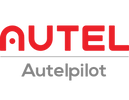In the United States, roof inspection is an important part of the housing maintenance, insurance claims and construction industries. Roof inspection is critical to maintaining the safety and service life of any building. The modern approach to roof inspection drones has revolutionized the roof inspection industry.
The rapid development of drone technology has achieved efficient, accurate and contactless air asset inspections of critical infrastructure, greatly reducing manpower and material costs, and bringing unique advantages.
Why do I need a rooftop inspection drone?
Roof inspection is a basic need for many scenarios, such as residential roofs, commercial buildings, warehouses, solar power plants, metal roofs, insurance claims, and the construction industry. Drones efficiently scan roofs, providing a comprehensive perspective and data.
Home Maintenance: Homeowners need to regularly check the roof to ensure that the warranty is valid and prevent high repair costs due to minor neglect (such as defective tiles or minor leakage).

Insurance claims: Insurers need to quickly assess roof damage to handle claims after a hurricane storm or natural disaster. Drones can quickly provide high-resolution images and thermal imaging data to detect hidden damage.

Construction Industry: Contractors need to accurately measure roof area and slope before bidding or repairing, and drones can provide accurate data through 3D modeling and AI analysis to simplify the estimation process.

Traditional roof inspection vs Drone roof inspection
The importance of roof inspection is self-evident. Both traditional artificial roof inspections or drone roof inspections can be effectively managed for roof maintenance. Here, we will take you to understand the advantages and disadvantages of human inspection and drone inspection.
Traditional roof inspection

Traditional inspection methods rely on manual climbing, pose a risk of falling and are inefficient on complex roofs. Moreover, manual inspection can only be carried out by visual inspection, with limited scope and greatly extended inspection time.
| Traditional Roof Inspections | Advantages | Disadvantages |
|
|
Drone roof inspection

The drone can complete inspections by operating from the ground, greatly improving safety. In addition, modern drones are equipped with 4K cameras, thermal imaging, and AI vision algorithms, which can capture large-area high-definition images and videos, and help identify problems such as tile damage, water leakage points, solar panel failures.
| Drone Roof Inspections | Advantages | Disadvantages |
|
|
The choice between traditional and drone inspections depends largely on your specific needs. While both roof inspection methods have their advantages and disadvantages, the most effective approach is often a combination of traditional roof inspections and drones. Drone visual inspections identify problems ahead of time, while traditional manual inspections focus on key maintenance areas.
Cheapest drone for roof inspection – Autel EVO Lite 6K Enterprise


Autel Robotics EVO Lite 6K Enterprise - Basic Combo
$1,459.00 USD
The Autel EVO Lite 6K Enterprise is a light commercial drone that supports 6K cameras, 12KM image transmission, 40 minutes flight time, and paired with the 6.0-inch Autel Smart Controller SE V2 and Autel Enterprise App can effectively and safely conduct 100% inspections of hard-to-reach roof areas from the ground.
Deploy remote control Autel drone for roof inspections is very fast and efficient. The drone is maneuverable and can capture 6K high-resolution aerial photos and videos of hard-to-resistance roof areas and components.
EVO Lite 6K Enterprise is equipped with GPS flight mode, three-way obstacle avoidance and AI recognition capabilities. It can pre-set flight routes in advance and supports hovering fixed-point zoom to enlarge the key images without worrying about nearby obstacles.
In unregulated airspace, the legal flight height of the drone can reach 400 feet above the building, and it is fully capable of inspecting roofs, chimneys and other roof penetrations that are too high or cannot be safely reached with a ladder.
Inspectors can always keep the drone within sight and view what the camera captures in real time, conduct key investigations, and accurately evaluate and record problem data for roof inspections and maintenance.
Read More: 【2025】Top 5 Best Drones for Roof Inspections
Should I buy a drone for roof inspection?
Drone roof inspection pioneered new methods, significantly improving the quality and safety of roof evaluation.
Roof inspections are in a high-risk industry, with drones eliminating the need to climb ladders or walk on unstable roofs, reducing the risk of accidents. If it is a private rooftop residential inspection, the drone can complete the whole house inspection and evaluation within 10-30 minutes, greatly improving the inspection efficiency.

Meanwhile, roof inspection needs vary in cities and suburbs. Choosing a commercial drone for roof inspection can easily cover the roof of a high-rise building and detect difficult-to-reach areas. Thermal inspection of the drone roof is thanks to thermal imaging drones that can detect more problems with houses regarding leaks, damaged seepage and insulation.
The Autel EVO Lite 6K Enterprise price only $1,459 and is the cheapest roof inspection drone. The drone can also switch on the EVO Lite 640T camera and turn on the thermal inspection, which will further improve the inspection capabilities.
Summarize
Investing in roof inspection drones not only saves time and costs, but also improves safety. The Autel EVO Lite 6K Enterprise is an ultra-expensive and cost-effective roof inspection drone that is reshaping the standards of the roof maintenance and insurance industry in the United States.
Whether homeowners, contractors or insurers, they should recognize the potential huge advantages of roof inspection drones, which opens the door to smarter and safer inspection methods for air operations and greatly reduces costs.








